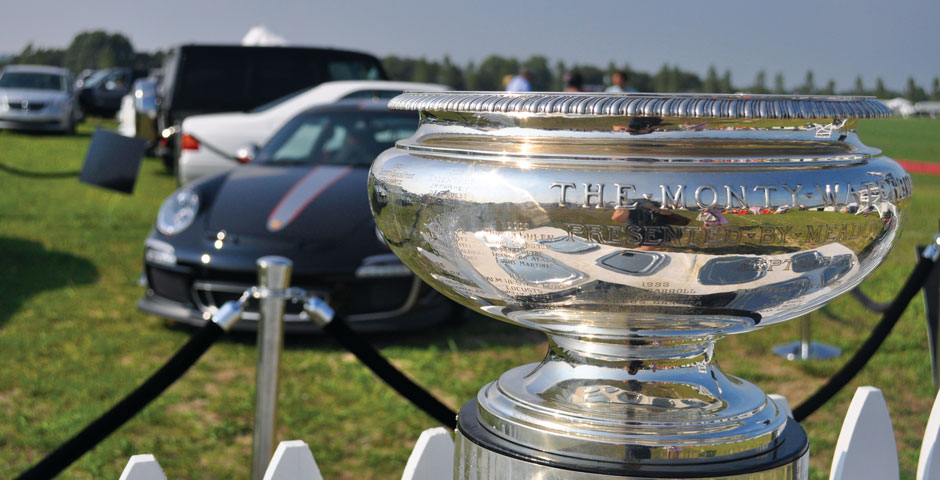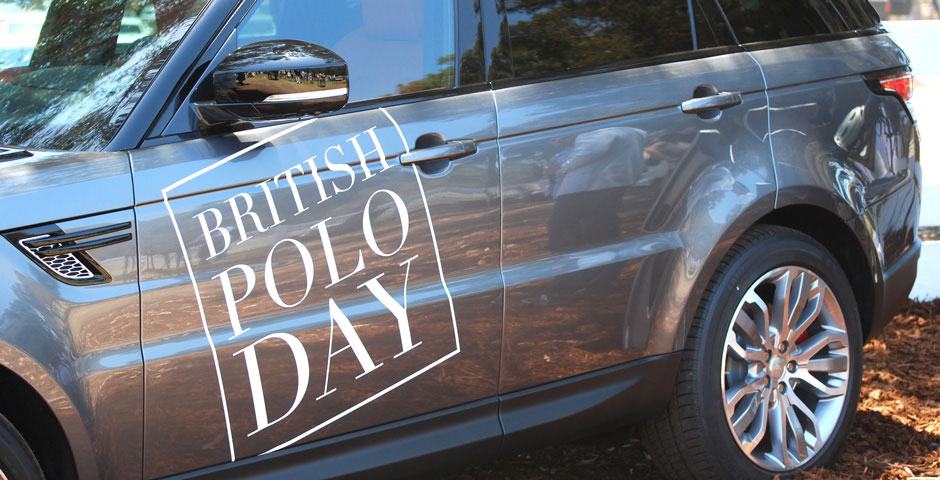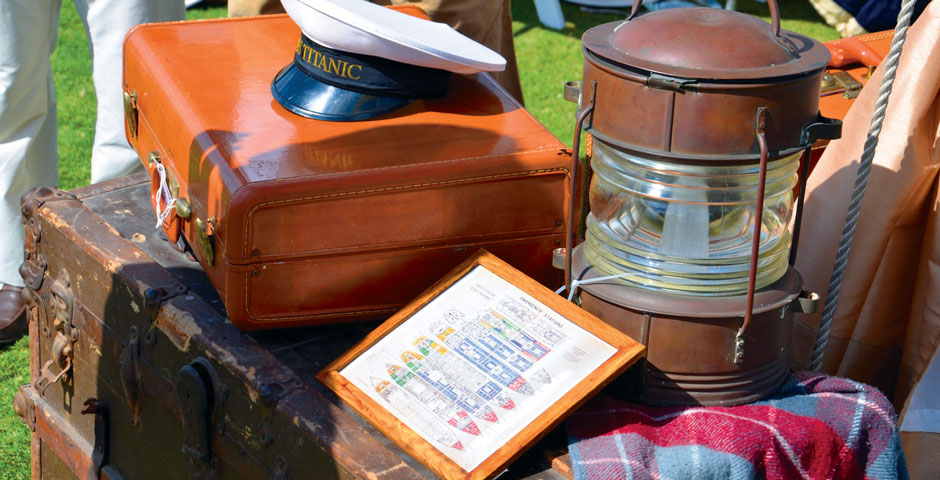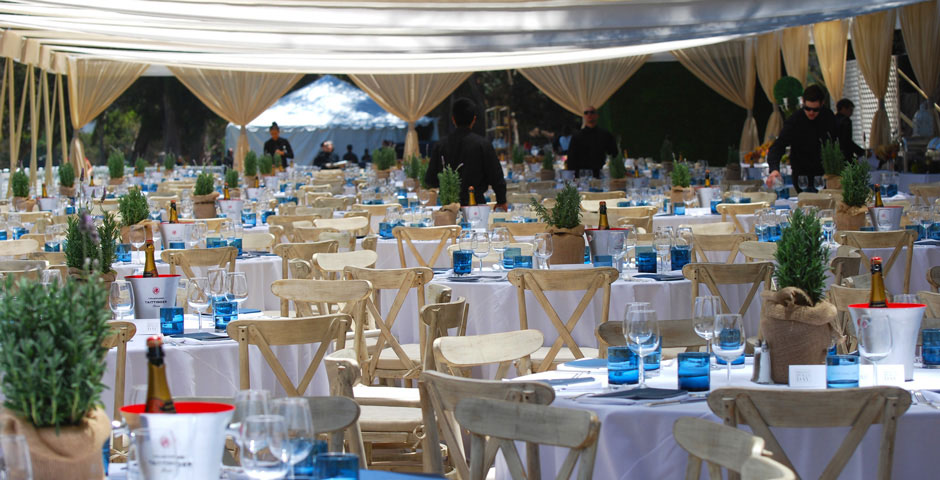Polo has long been associated with society’s upper crust, where fine champagne, floppy hats, and seersucker suits are de rigueur. It’s not an entirely unfounded cliché. Well-heeled celebrities and socialites still mingle under the shade of white tents, enjoying cocktails, hors d’oeuvres, and the customary divot stomp at halftime, but there has been a notable effort in recent years to bring the Sport of Kings to a broader community. Here’s a primer to get you prepared for an afternoon with the ponies:

A polo primer
With DANIEL M. SCHERAGA
Executive Director, Polo Training Foundation.
Read the story here. Published Fall 2013.
Polo, in my opinion, is the most exciting sport to play. It’s also fun to watch, whether it’s the outdoor version, played on a grass field the size of nine football fields, or in the arena, on a dirt field 100 by 50 yards (one football field).
Outdoor polo consists of four players on a team, while the arena game has three per side. For the uninitiated spectator, outdoor polo, because of the vast size of the field, may initially be more difficult to follow, but being outdoors in beautiful weather and locations more than makes up for it. Outdoor spectators also get to help make the game a success by strolling on the manicured grass and replacing divots during halftime.
Arena polo is easier to watch at first because the action is up close. Both games are contact sports, where the best defensive play is to “ride your man out,” with the horses running parallel and one horse pushing the other away from the ball. There is much more contact in the arena. National intercollegiate and interscholastic (high school) tournaments are played in the arena. These competitions move around the country, and it is thrilling to watch these young up-and-coming players.
Rules and play
Polo rules are set up primarily for the safety of the horses, but they also keep the players safe. The most important concept is the right-of-way, determined by the direction of the ball’s movement. This movement creates an imaginary line from where the ball began moving to the point it stopped. The player following the ball with the line on his/her offside (right side) has the right-of-way and any player wishing to make a defensive play on that player must do one of three things:
1. push the opponent’s horse while riding parallel and even with the other horse;
2. hook the player’s mallet from the same side the player is swinging; or
3. steal the ball by riding next to the player on his/her offside and hitting the ball on the nearside (left side).
Players
The four players on each outdoor team are assigned positions, designated by the numbers from 1 to 4 and worn on their team jerseys. Usually, the most experienced and highest rated players are at positions 2 and 3.
Position Number 1. The attacking offensive player, similar to a forward in hockey or soccer. This player is an accurate hitter and concentrates on opportunities for scoring, but also has the defensive responsibility for the opposing 3 player.
Position Number 2. Primarily an offensive player, No. 2 turns quickly to follow the No. 1 player on attack. He/she is also responsible for defense, interchanging with the No. 3 player.
Position Number 3. Similar to a quarterback in football, this player is usually the highest-handicapped and most-experienced player on the team. No. 3 attacks the opposing offense and turns the ball up-field with a pass to the No. 2 or No. 1 player. The No. 3 player must be able to hit long distances with accuracy and also be good at stick and ball control.
Position Number 4. This player is most valuable on defense for blocking the team’s goal, capable of turning the play with a good back shot from defense to offense and moving the ball toward his team’s goal.
These roles are flexible, and each player is prepared to make any play that benefits the team, changing position as necessary.
 Scoring
Scoring
A team scores when a player, using the side of his mallet, hits the ball between the opposing goalposts, which are 24 feet apart. Each goal is one point, and the team with the most points at the end of the game wins the match. There are two mounted umpires and a referee on the ground off to the side who make calls involving dangerous riding and mallet use.
Player and Team Handicaps
Players are rated on a scale from minus 2 to plus 10. Minus 2 indicates a novice player, while a player rated at 10 goals has the highest handicap possible. It is so difficult to attain a 10-goal handicap that there are fewer than a dozen such players in the world. Handicaps of five goals and above generally belong to professional players. The handicap number is not an estimate of the number of goals a player might score in a game. It is the overall rating of a player’s horsemanship, team play, knowledge of the game, strategy, and horses. In matches, the handicaps of all four players are totaled. If the total handicap of a team is more than the total of team against which they are playing, the difference is added to the scoreboard. For example, if Team A has a total handicap of six goals and Team B has a handicap of four goals, Team B would begin the match with a two-goal advantage.
The Game
The game begins with the players facing the opposing team in two lines. An umpire in the center bowls a ball directly between the two teams, and the teams fight for possession much like the drop of a hockey puck. A polo game is four to six periods (chukkas) long. Each period is seven minutes, and there can be a 30-second overtime. Chukkas are short because of the horses’ exertion during the match. In professional polo, a different horse is used for each chukka. In overtime, the rider may use a different horse or go back to the best horse he used during the match. Four minutes are given to riders between chukkas to change horses.
Polo Glossary
Just like golf’s “birdies and eagles” and hockey’s “icing,” polo has its own
language, and it’s really quite simple.
Chukka There are six chukkas (or chukkers or periods) in a full-length outdoor game, four in arena polo. Each lasts seven minutes. There is no overtime at the end of the last chukka unless the score is tied, in which case a seventh period will be played.
Field 300 yards long and 160 yards wide, the largest field in organized sport.m(nine football fields).
Goal Any time the ball crosses the line between the goalposts, it is considered a goal—regardless of whether the ball was knocked by a mallet or kicked by a pony. The teams change sides after a goal is scored.
Handicap Handicaps in polo range from -2 to 10 “goals,” with 10 being the best. A player who is playing above his or her handicap level (e.g., a 3 playing as a 5) is known as a ringer and is a very valuable but short-lived commodity. Handicaps are assessed and revised twice a year.
Hook A player can interfere with another’s shot by putting his mallet in the way of the striker’s swing. If the player reaches across his opponent’s mount to hook, it’s called a cross-hook and considered a foul.
Near side The left-hand side of a horse.
Off side The right-hand side of a horse.
Polo pony Although they are not recognized as a distinct breed, polo ponies are truly unique horses that combine the traits of a number of breeds. Next to a player’s skills, the polo pony is the most important factor in polo. In the
United States, Thoroughbred horses are usually bred with Quarter horses
to produce polo ponies.
Penalty Given from any position the umpires choose, from the goal line to midfield shot and with or without a defender allowed in the goal mouth, these shots depend on the severity of the foul. The shots are numbered from 1 to 10 depending on the severity of the infraction.
Ride-off This is when one player makes contact with another and attempts to push him off the line of the ball to prevent his hitting the ball.
Safety This is a type of penalty that occurs when the ball rolls over the back line wide of the goal mouth as a result of being touched by a defending player. The offensive team is awarded a safety penalty shot from 60 yards out to a defended goal.
Sideboards These 9- to 11-inch boards along the sides of the field are optional; they contain the ball to an extent. Players can cross the boards and remain in play, but if the ball hops over them, it’s out of bounds.
Third man If and when the umpires disagree on a call, they refer to the “third man,” or referee, sitting on the sidelines.
Throw-in A chukka begins (and sometimes play resumes) with the umpire bowling the ball between the two teams.
Time out An umpire calls a time out when a foul is committed, an accident occurs or at his own discretion. A player may only call a time out if his tack is broken or he is injured. No time out is allowed for changing mounts
or replacing broken mallets during a chukka, although the player may do
so whenever necessary.
Umpires Two mounted umpires control the game, enforce the rules, and guard the safety of players and ponies.

Polo traditions
–The ceremonial pre-game coin toss features a celebrity or area VIP who flips a coin to decide the initial direction of play.
–The singing of the national anthem by various artists—some local, some internationally known—takes place before the ball is thrown to start the match.
–Tailgating is a tradition almost as old as polo itself, and ranges from simple to elaborate. Across the country, polo clubs host tailgate competitions that add to the pageantry of the match itself.
–Hat contests add color and a competitive aspect to “dressing for polo.” Hats give female spectators an excuse to go that extra step when making a fashion statement.
–Champagne at halftime is a ritual unique to the International Polo Club. During the halftime break, spectators socialize on the field while sipping a complimentary glass of bubbles. For children of all ages, ice cream bars also are distributed.
–Everyone can help repair the field during the halftime divot stomp. Not only does it help replace clumps of grass kicked up by galloping horses, it also provides a fun opportunity to socialize.
 How to talk polo
How to talk polo
New to polo? Here are a few expressions that will have you sounding like a pro.
“The pace is a bit choppy.” Say this with just the right touch of impatience in your voice. This is an impeccable and unchallengeable comment. The pace is always choppy in polo.
“Boy, that chestnut mare sure is running out of steam.” There will always be a chestnut mare on the field, and all horses are running out of steam by the end of any chukka.
“The losers were simply out-horsed.” At the end of any lopsided game, feel free to declare this. Nine times out of 10, they were.
“His nearside reminds me of a young Cambiaso.” Sprinkle this into the middle of play. It infers you actually know what a “nearside” is and that you recognize the genius of 10-goaler Adolfo Cambiaso on
the field.
“Although I miss the tradition of the wooden balls, the plastic balls they use today hold their shape longer.” The polo ball used to be made of bamboo root but is now made of solid, hardened plastic, and of course you know that.
Tap your lips and wonder out loud, “When was it they barred left-handed players from the game?” People will be impressed you know lefties were barred; to seal their admiration, suddenly recall the year: 1974.

